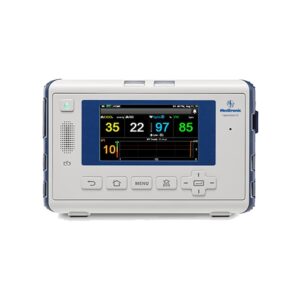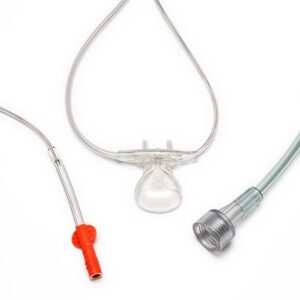Capnography and Sedation Practice

Although capnography has historically been used mostly by anaesthetists, it is becoming more common in different clinical settings being used by nurses, paramedics and doctors non anaesthetists in emergency departments, interventional rooms and recovery departments.
The different levels of sedation
Minimal Sedation (Anxiolysis) is a drug-induced state during which patients respond normally to verbal commands. Although cognitive function and physical coordination may be impaired, airway reflexes, and ventilatory and cardiovascular functions are unaffected.
Moderate Sedation/Analgesia (“Conscious Sedation”) is a drug-induced depression of consciousness during which patients respond purposefully** to verbal commands, either alone or accompanied by light tactile stimulation. No interventions are required to maintain a patent airway, and spontaneous ventilation is adequate. Cardiovascular function is usually maintained.
Deep Sedation/Analgesia is a drug-induced depression of consciousness during which patients cannot be easily aroused but respond purposefully** following repeated or painful stimulation. The ability to independently maintain ventilatory function may be impaired. Patients may require assistance in maintaining a patent airway, and spontaneous ventilation may be inadequate. Cardiovascular function is usually maintained.
Guidelines on the use of Capnography in Sedation Practice
- House of Delegates of ASA (2011) “During moderate or deep sedation, the adequacy of ventilation shall be evaluated by continual observation of qualitative clinical signs and monitoring for the presence of exhaled carbon dioxide unless precluded or invalidated by the nature of the patient, procedure, or equipment.”
- AAGBI (2015) “Continuous capnography should be used for all patients undergoing moderate or deep sedation, and should be available wherever any patients undergoing anaesthesia or moderate or deep sedation are recovered.”
- Academy of Medical Royal Colleges (2013) issues the first guidelines and defines Fundamental Standards and Development Standards, recommending competency-based formal training for all healthcare professionals involved in sedation
- Academy of Medical Royal Colleges (2021) issues an update to the guidelines, recognising the incomplete uptake of 2013 document. In respect to capnography, this should be used when patients are beyond minimal sedation.
How to interpret capnography
There are 3 main aspects you must notice in capnography in order to make a correct interpretation and appropriate clinical decisions:
– End Tidal CO2: range between 35 and 40 mmHg or 4.0 – 5.7 kPa
– Respiratory Rate: range between 12 and 20 breaths per minute
– Capnogram Waveform shape
Duckworth (2017) suggests the acronym PQRST when assessing the ETCO2 waveform. It stands for Proper, Quantity, Rate, Shape and Trend.
| Proper | Check if the readings for quantity, rate, shape and trending are normal for that particular patient, considering any metabolic, ventilatory or perfusion problems. |
| Quantity | EtCO2 value should be 35-45 mmHg or 4.0 – 5.7 kPa |
| Rate | Ventilation should be 12-20 breaths per minute (bpm) for adults who are breathing by themselves |
| Shape | Waveform should normally be a rectangle with rounded corners |
| Trend | Trending of the quantity, rate and shape of EtCO2 should be stable or improving. |
Equipment required for capnography
Capnostream35 Monitor: Real-time, continuous monitoring of patient’s respiratory status by measuring etCO2, SpO2, respiration rate, and pulse rate.

Microstream Capnography Sampling line: collecting CO2 at nose/mouth and connecting to monitor.
- Oral scoop design has wide surface area to provide breath capture even in the presence of shallow breathing
- Oxygen flows from holes in front of nasal prongs and improves humidity of O2

Click here to learn more about capnography in sedation practice by listening to the free webinar.
